

Ben Zachariah
CarExpert's top five ute reviews of 2025
22 Hours Ago
Sick of dual-cab utes aimed at going further off-road? Say g'day to the Amarok W580.



Contributor
New from
$71,990
excl. on-roads

Contributor
New from
$71,990
excl. on-roads


Contributor
New from
$71,990
excl. on-roads

Contributor
New from
$71,990
excl. on-roads
Quickly see how this car stacks up against its competition. Select any benchmark to see more details.
Where expert car reviews meet expert car buying – CarExpert gives you trusted advice, personalised service and real savings on your next new car.
The dual-cab ute scene in Australia just keeps getting bigger.
To keep up, carmakers are making their utes tougher. Special editions abound, most of them focused going further into the wilderness.
It’s a good idea on paper, but not everyone wants to go off-roading. The majority of owners use their cars to run to the shopping centre, or take the kids to school, or lug bikes around on the weekend.
That’s where the 2021 Volkswagen Amarok W580 comes in.

Based on the most powerful Volkswagen Amarok V6, the W580 has been modified by Walkinshaw in Clayton, Victoria.
The team working on the project has pedigree. Before they were working on dual-cab utes, most of the team was involved in developing hot Holdens for HSV – including the meanest sedan Australia has ever seen, the ultra-rare GTSR W1.
It’s being billed as a grand touring ute, with a more sophisticated suspension to make better use of the torquey V6 turbo-diesel engine under the bonnet.
How does that stack up on the open road?
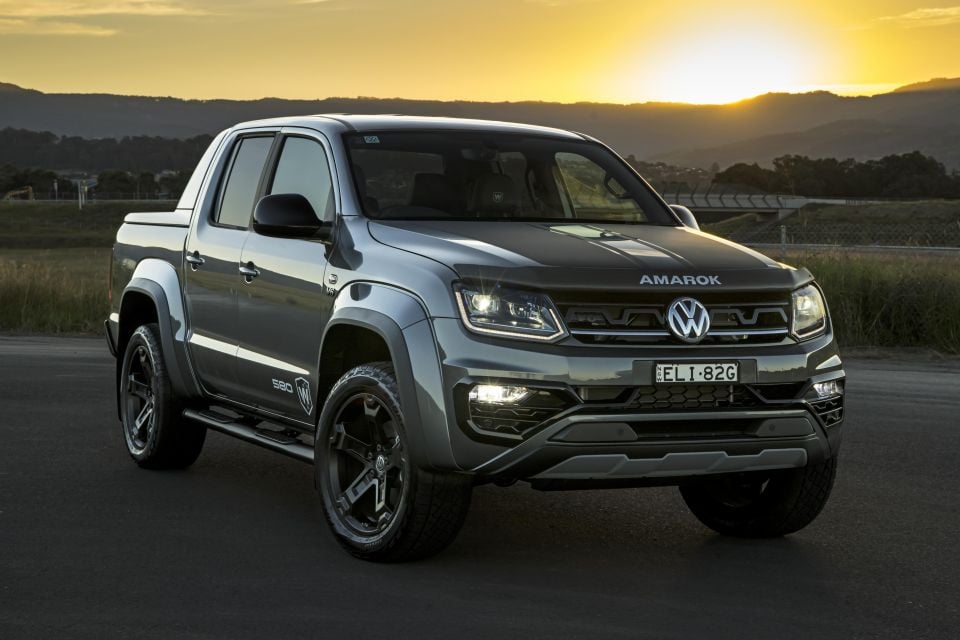
There are two models in the Volkswagen Amarok W580 range.
The first is the Amarok V6 W580, priced from $71,990before on-road costs.
It sits between the Ford Ranger Wildtrak X ($67,990 before on-roads) and the Ranger Raptor ($77,190 before on-roads) on the price spectrum.
The range-topper is the V6 W580S, priced from $79,990 before on-roads.
Not only is it the most expensive member of the Amarok range, it’s as much as you can pay for a ute that isn’t a Ram 1500 or Chevrolet Silverado 1500.
It’s a close match for the Ranger Raptor X ($79,390 before on-roads) on price too.

Buy your new car without the stress. It's fast, simple and completely free.

Great service from Travis and team, second time I have used this business would not hesitate to recommend them to anyone
Craig C.
Purchased a Ford Ranger in Sunshine Coast, QLD
CarExpert helped Craig save thousands on his Ford Ranger, now let us save you on your next new car.
Find a dealThe 2021 Amarok V6 W580 line-up comes well equipped.
Borrowed from lower-end models are parking sensors, automatic headlights and wipers, tinted tail lights, a lockable tailgate, painted door handles and mirrors, a full-sized spare wheel, dual-zone climate control, and carpet flooring.
It also gets bi-xenon headlights, LED daytime running lights, cornering lights, an alarm with interior monitoring, side steps, sports bars, tyre-pressure monitoring, and satellite navigation.
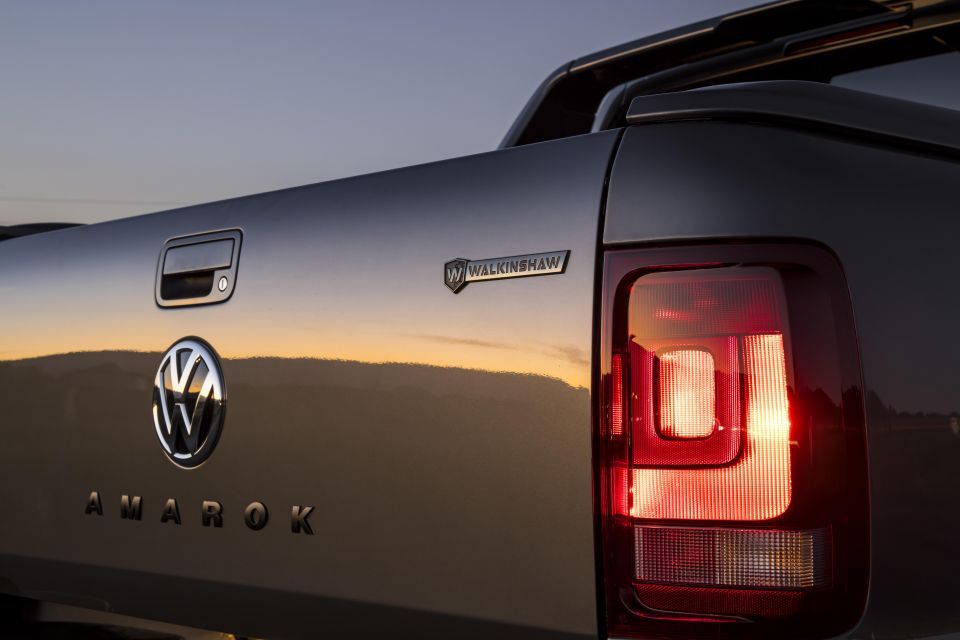
The more basic W580 rides on 20-inch alloy wheels and Pirelli Scorpion tyres, and gets black decals, wheel arch extensions, a unique grille, a new lower bumper, W580 carpet mats and headrests, paddle shifters, and a build plaque.
There are some neat little additions there – usually, paddle shifters are reserved for the top-spec Amarok 580 models, for example.
Hopping to the W580S brings branded exhaust tips, bonnet decals, LED fog lights, front underbody styling trim, a tub liner, leather-trimmed ErgoComfort seats that are 14-way powered and heated up front, satellite navigation, power-folding side mirrors, and a colour trip computer.
Both models have the same suspension tune, details of which are laid out in the driving section.
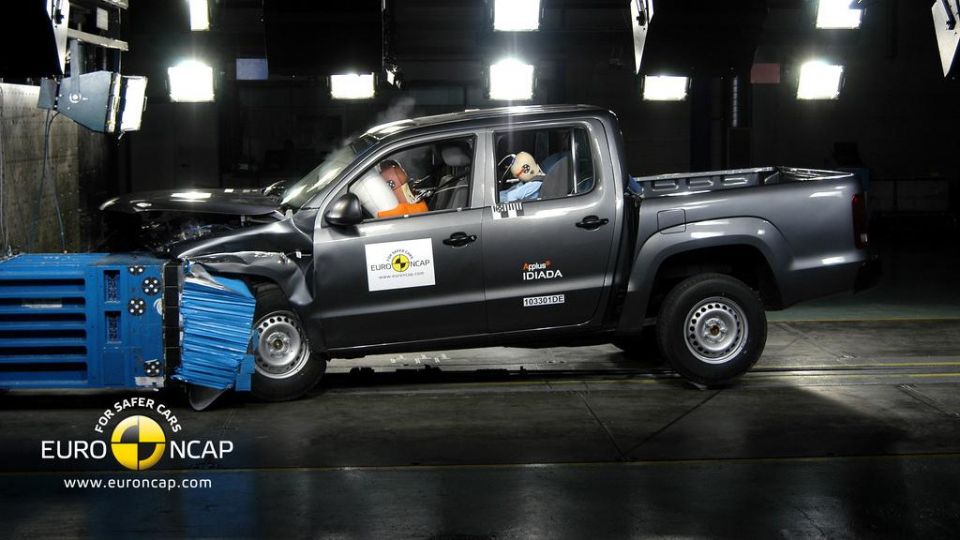
When the Amarok was tested by ANCAP almost a decade ago in 2011, it received a rating of five stars.
That rating was based on a frontal offset score of 13.99 out of 16 and a side impact score of 16 out of 16.
Whiplash and pedestrian protection were rated Good and Marginal, respectively.
All 2021 Volkswagen Amarok models come standard with front and front-side airbags and anti-lock brakes, but there are no airbags for rear seat occupants.
There’s also no active safety technology like autonomous emergency braking, which means the Amarok wouldn’t receive five stars if it was assessed again in 2021.
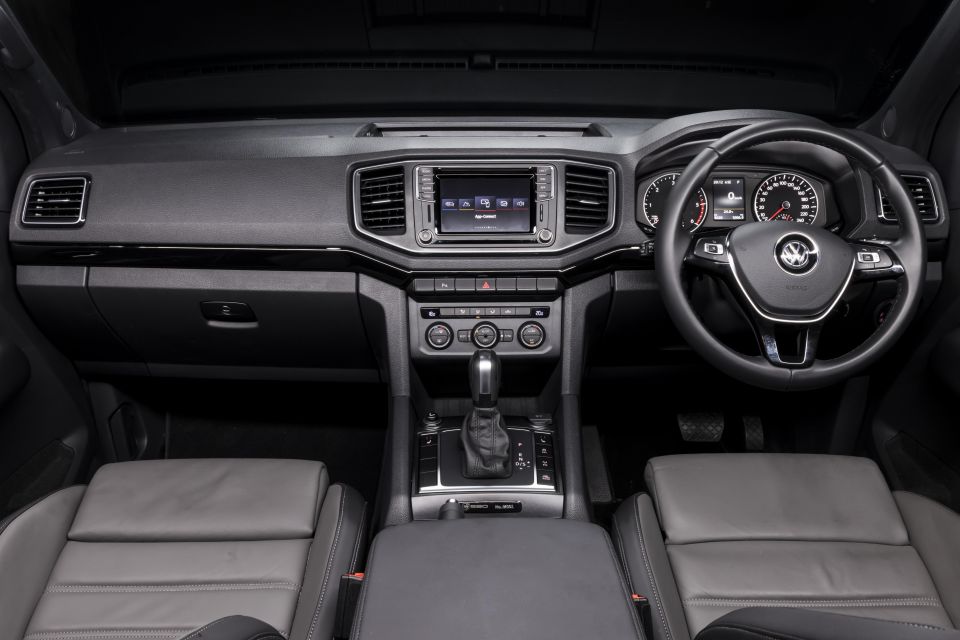
Not much has changed in the Amarok since its launch, for better and for worse.
It’s still one of the nicest ute cabins out there, with acres of space and an upright, clean design that’s more SUV than ute in a lot of ways.
The embossed headrests and unique floor mats are subtle touches, but they also make the cabin feel that little bit more special.
The driver is faced with simple analogue dials that’ll be familiar to anyone who’s driven a Golf or Tiguan from early in the 2010s, between which sits a simple trip computer with a digital speedometer.
The steering wheel is slim-rimmed, and the touch points feel high-quality relative to what’s on offer elsewhere in the dual-cab ute segment.
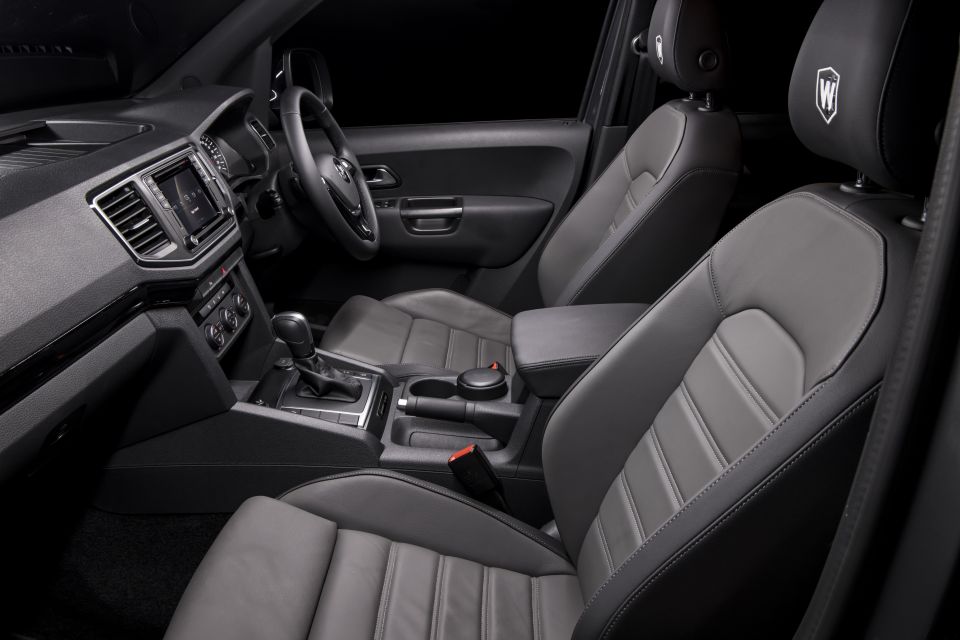
Volkswagen’s door trims and central armrest are generously padded which is ideal for long drives, and most of the dashboard plastics are hard-wearing without looking or feeling bargain basement.
Then again with a price between $70,000 and $80,000 before on-road costs, the Amarok W580 would want to feel a bit premium inside.
Regardless of whether you opt for the suede-trimmed seats in the W580 or the more ergonomic heated leather seats in the W580S, the driving position is excellent.
The steering wheel adjusts for reach and rake, and long-legged drivers are catered for better than in a HiLux or Triton, for example.
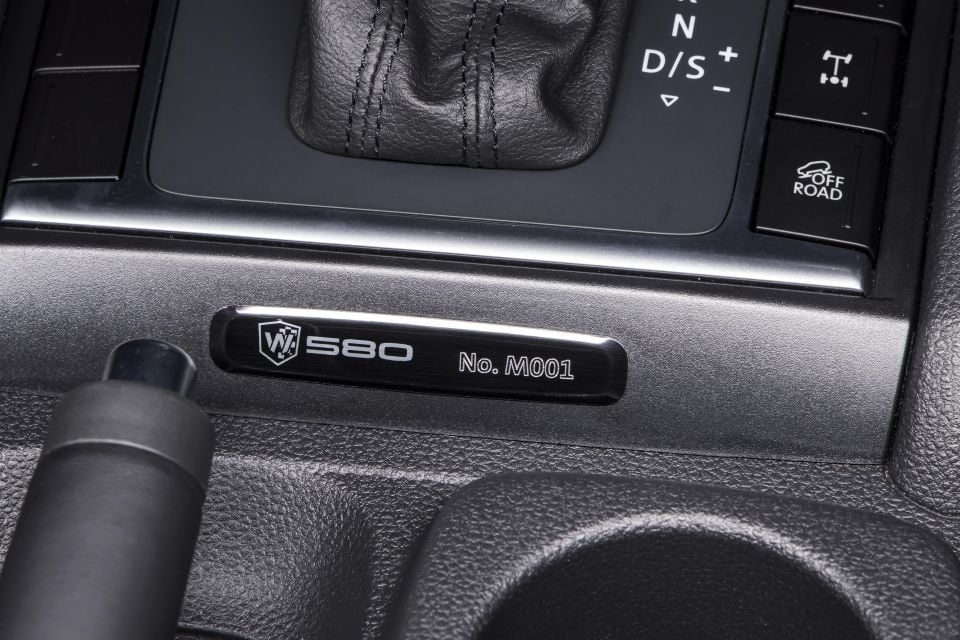
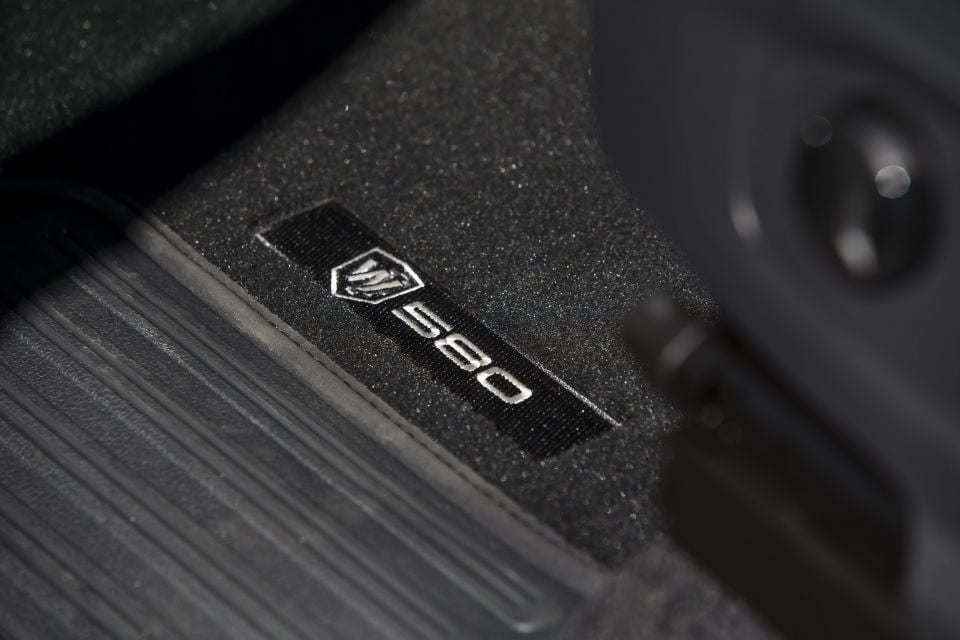
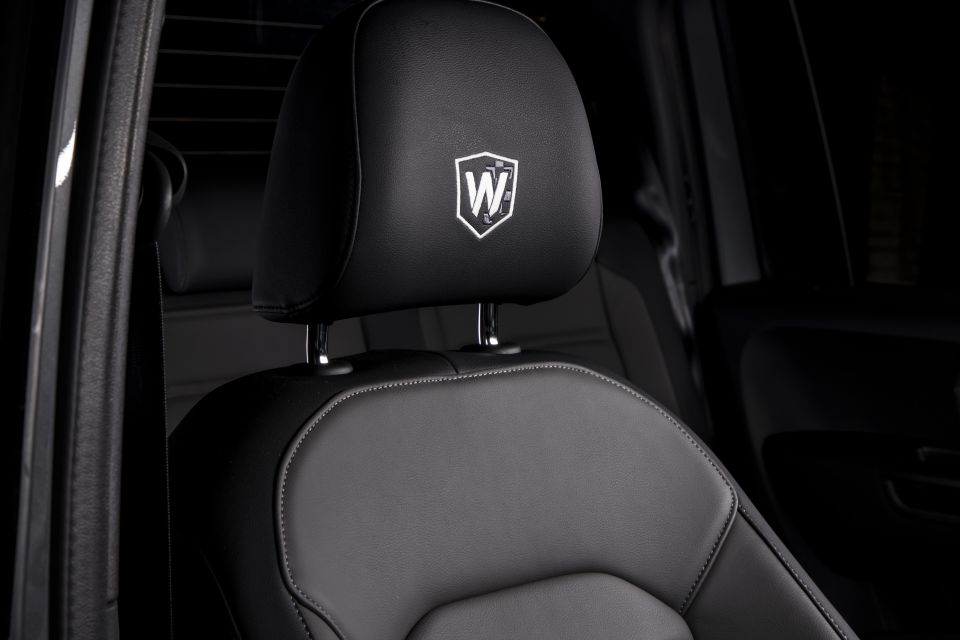
Storage space up front is generous, from the big cupholders to the flat cubby atop the dashboard. There’s acres of room under the central armrest, and the felt-lined door bins have room for a chunky iced coffee – essential, if you’re a ute driver.
Where the Amarok feels slightly off the pace is infotainment.
Sure, the 6.3-inch central touchscreen is sharp to look at and snappy to respond, but it looks and feels a bit basic compared to the 8.0-inch systems now becoming common in rivals and other VW models.
Even the latest Polo has a more up-to-date infotainment system, which grates in an expensive dual-cab flagship. Smartphone mirroring is wired, but a good way to access a more up-to-date interface.
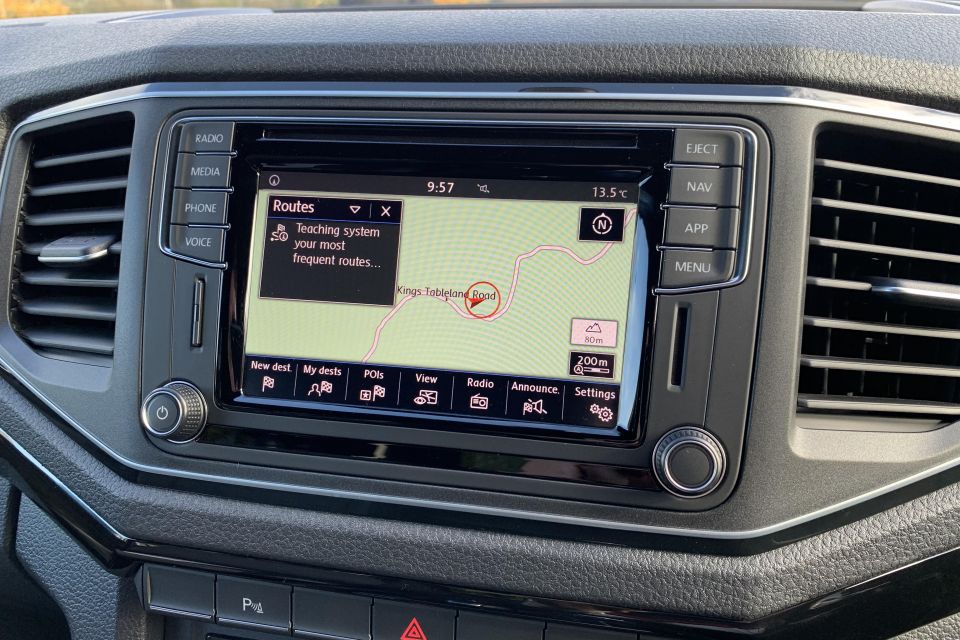
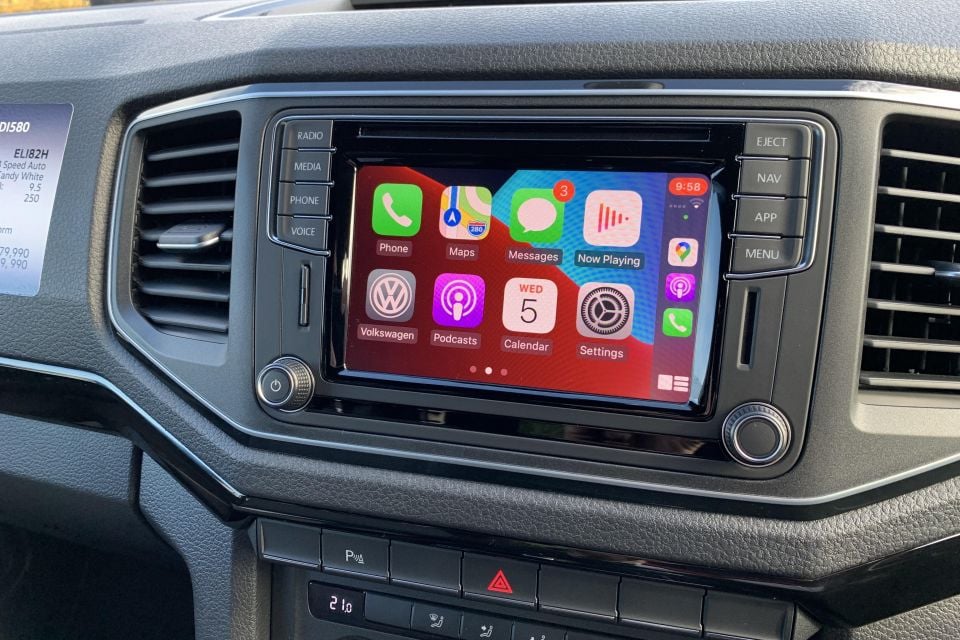
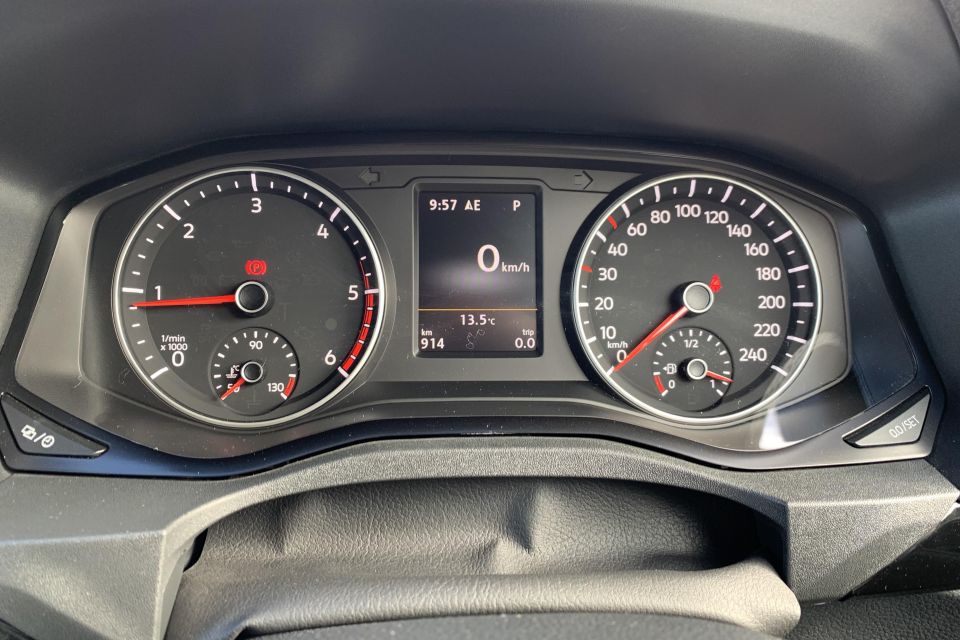
The single USB-A port is hidden deep beneath the dashboard, and the lack of more than one plug stands out against more device-friendly competition.
Rear seat passengers in the Amarok are well catered for when it comes to width, but not legroom. If you’re trying to seat three burly tradies across it’s still a class-leader for space, but legroom is extremely limited behind taller drivers.
There are no vents back there, and the curtain airbags only cover the front seats.
If you’re carting around children, that’s worth thinking long and hard about.
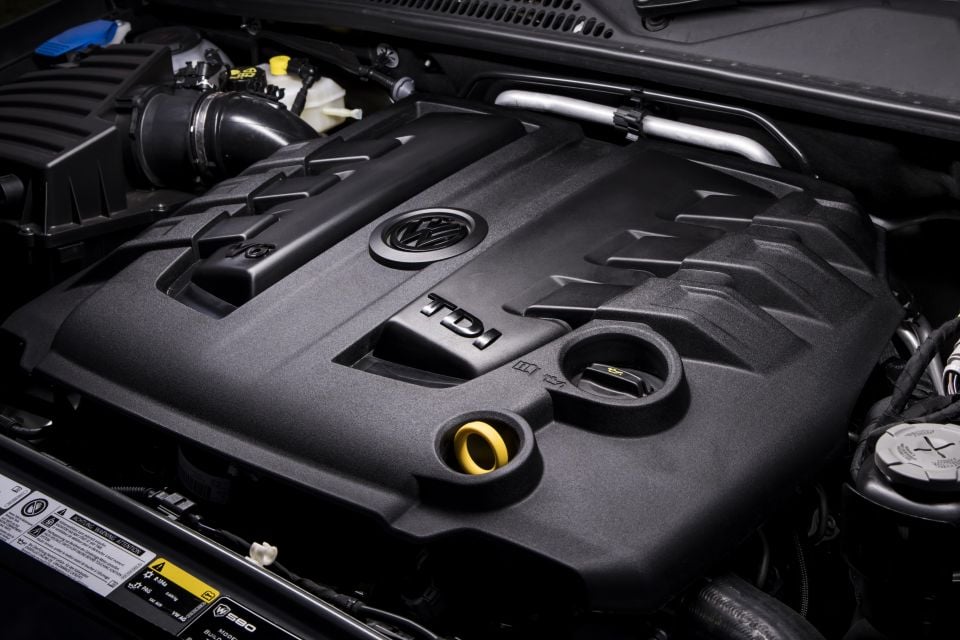
It’s getting long in the tooth, but the Volkswagen Amarok still has something none of its rivals can match: a big, powerful 3.0-litre V6 diesel engine.
The W580 packs the most powerful version of that engine. It makes 190kW of power and 580Nm of torque, with an overboost function bumping peak power up to 200kW for short periods.
It breathes through a unique exhaust in the W580, which gives a more purposeful burble on the outside but doesn’t change much from behind the wheel.
Power is put to the road through an eight-speed automatic transmission and full-time all-wheel drive.
Claimed fuel economy is 9.5L/100km on the combined cycle.
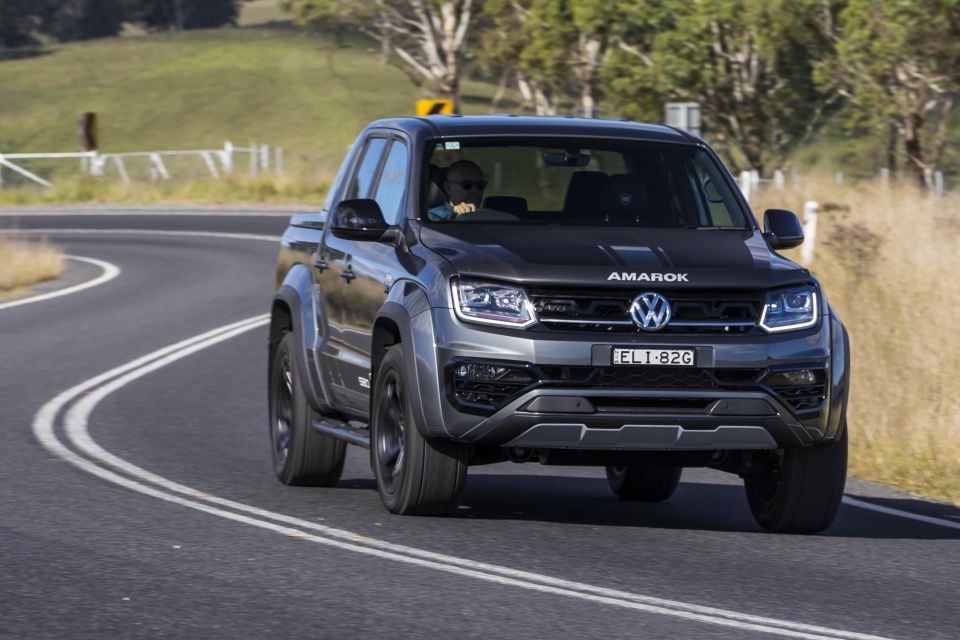
Walkinshaw’s changes to the Amarok are more than just skin deep.
The W580 rides on twin-tube dampers with a 35mm internal bore, up 3mm on the stock items with a thicker damper shaft.
Walkinshaw says the larger bore allows for more fluid in the damper, which lets it more precisely tune the way the car behaves over bumps.
Spring rates are unchanged, but a lift and new rolling stock make for a ride 40mm taller than standard up front. The W580 sits on 20-inch wheels that are wider than stock and wrapped in Pirelli Scorpion tyres.
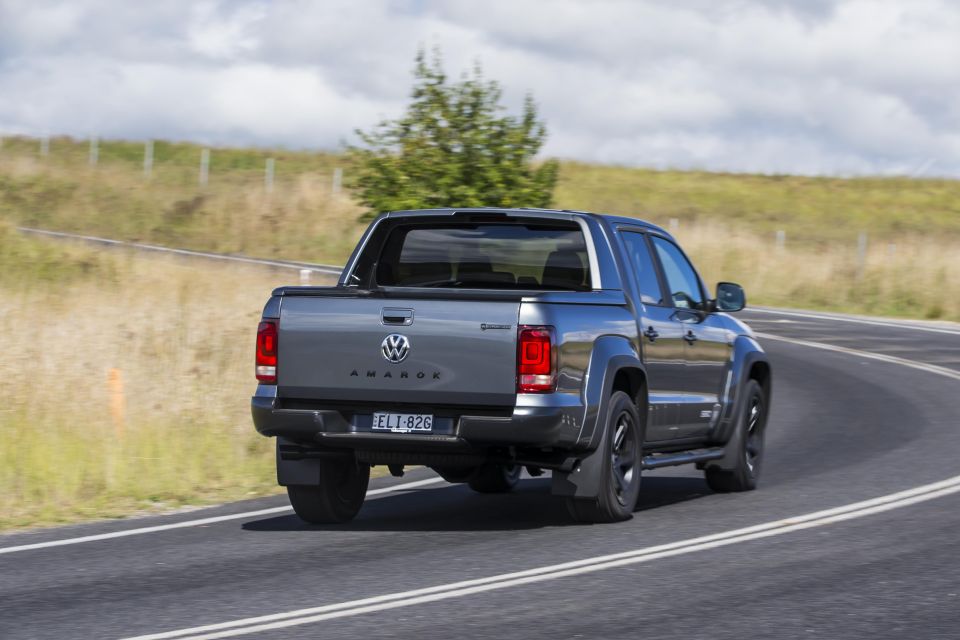
There wasn’t much wrong with how the Amarok drove to start with, but the W580 feels tighter again.
The suspension changes make for a slightly firmer ride at low speeds, where little bumps and imperfections filter more readily through to the cabin.
It’s not unbearable, but you’re slightly more aware of pimply surfaces the regular Amarok filters out. The payoff is a more settled ride at highway speeds.
Where most utes bounce around over big crests and dips, the W580 handles them in a single movement and gets on with business.
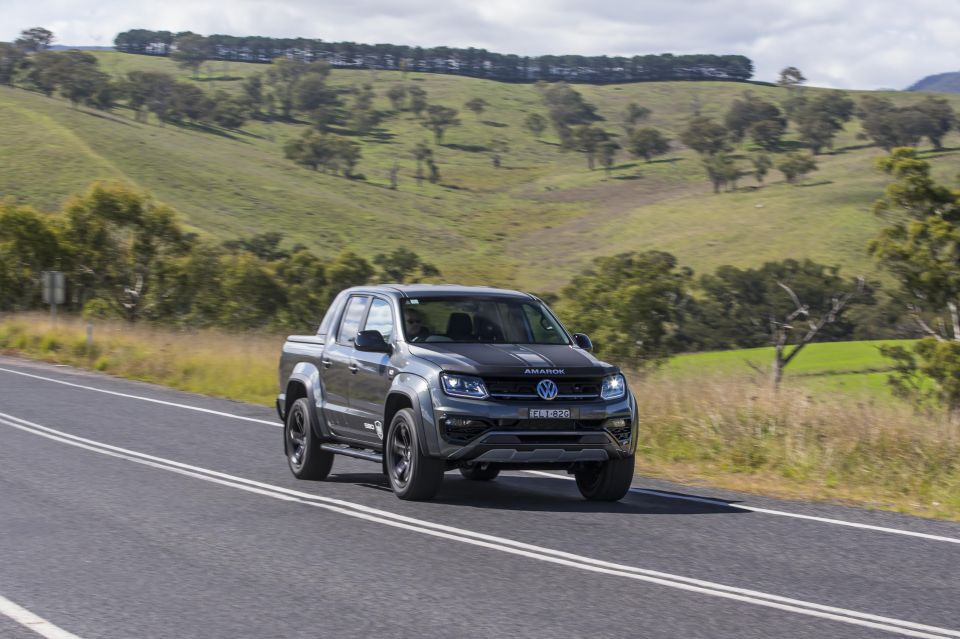
Where expert car reviews meet expert car buying – CarExpert gives you trusted advice, personalised service and real savings on your next new car.
The rear end in particular feels more tied down than any other dual-cab without a load in the tray. It flows nicely along gravel roads too, with a confidence-inspiring feeling of stability at speed.
Even nasty country roads barely unsettle it, save for the occasional shimmy and shake over really rough patches. This is a refined ute, but it’s still a ute after all.
The steering feels slightly heavier than in the regular Amarok, and the front end feels happier to turn at speed. Chalk that down to a blend of better body control, a wider track, and more performance-focused tyres than you get on the regular range.
Going quickly around corners isn’t really the point of a dual-cab ute, but the W580 will do it with more composure than it arguably should.
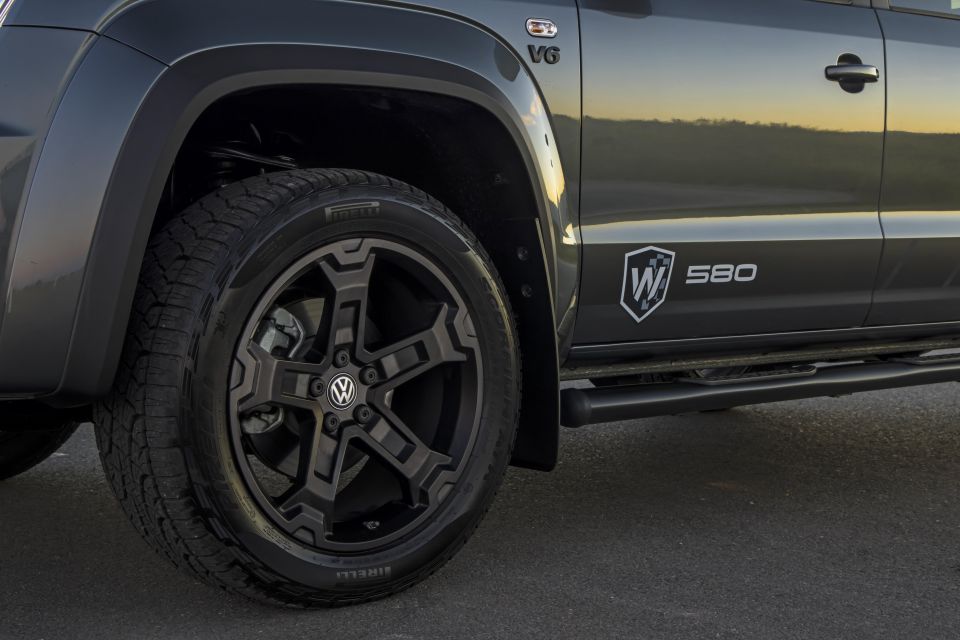
With quality rubber and permanent all-wheel drive you can lean on the engine without fear of lighting up the rear tyres when it’s wet, which pays dividends on twisty roads.
It also pays dividends in the city, where unladen utes with more traditional four-wheel drive systems tend to struggle if you’re not gentle with the throttle.
The engine in the Amarok has been a highlight since the V6 was introduced in 2016, and the W580 continues that tradition.
It feels muscular and expensive in a way none of its rivals can match, with silky-smooth torque delivery and an intelligent eight-speed auto to boot.
Vibrations and ugly, clattery diesel noises are notably absent in the cabin, which makes it all the more impressive when it pins you back in your seat through the fat mid-range.
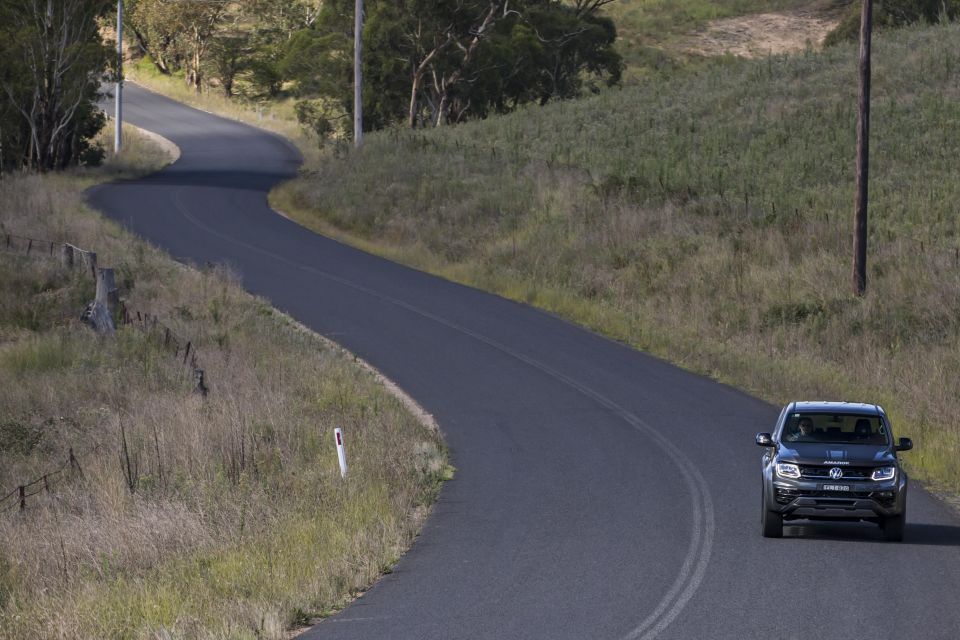
Peak torque is on tap between 1400rpm and 3000rpm, which makes for a ute that feels effortless at any speed. Lean on the accelerator and the eight-speed auto is smart enough to hold its current gear, letting the low-down twist do its thing.
Push harder and it shifts smartly down one, two, even three gears to shove you into the meat of the torque band and get the ‘Rok rolling. It even revs smoothly out to redline for a diesel, making it worth chasing the peak power at 4500rpm.
It spins below 2000rpm at 110km/h, whispering in the background. Wind and tyre noise are also well suppressed, making for a refined highway cruiser.
It’s a shame the Amarok doesn’t feature active cruise, lane-keeping, or blind-spot monitoring. The fact it debuted in 2011 is to blame, but it would burnish the car’s credentials as the long-haul cruiser of the dual-cab ute world.
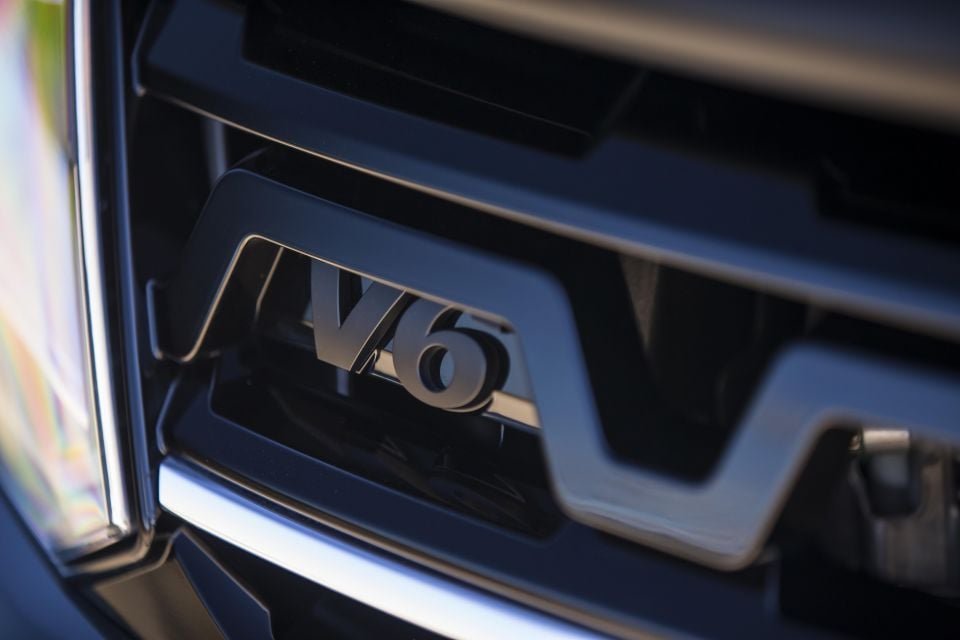
Like the wider Volkswagen range, the Amarok is backed by a five-year, unlimited-kilometre warranty.
Maintenance in the Amarok is required every 12 months or 15,000km – whichever comes first.
Volkswagen Australia offers five-year Care Plans which cover scheduled servicing for that period, and are significantly cheaper than paying as you go.
The service package costs $2300 for the six-cylinder Amarok.
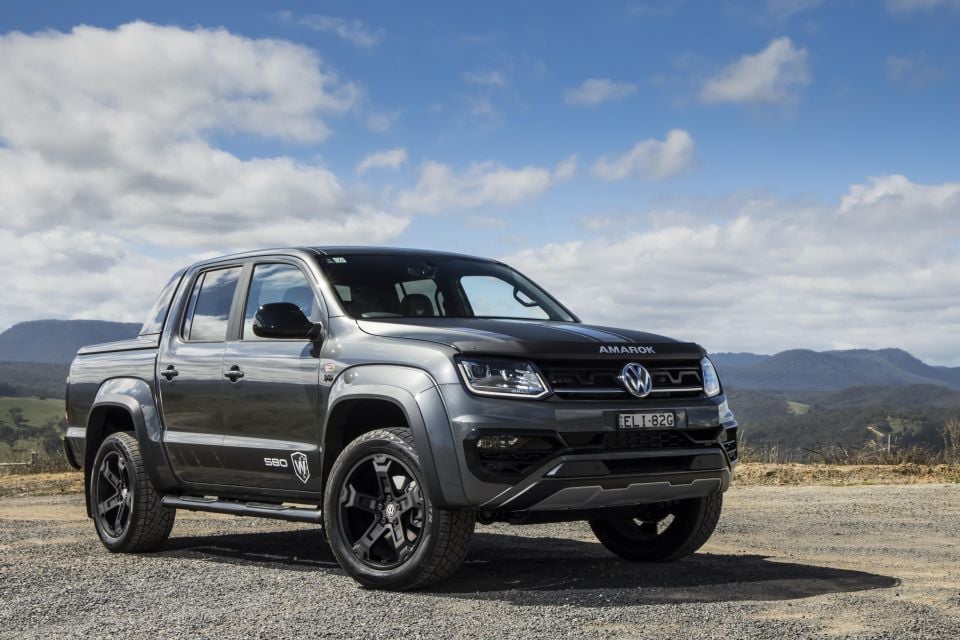
There wasn’t much wrong with how the Amarok drove in the first place, but the W580 definitely represents a subtle step forward.
It fills a gap in the rampantly popular dual-cab ute market with driving dynamics that better take advantage of the muscular engine, and a refined feeling befitting the Volkswagen badge.
Coupled with subtly tougher looks and the lure of an unchanged towing capacity compared to the TDI580 Aventura, it’s not hard to see why Volkswagen says stock is limited until the middle of 2021.
There’s no hiding the Amarok’s age in places. Its lack of active safety features is getting harder to overlook, and its rear accomodation is average at best.
But if you can look past those flaws the W580 is arguably the best-driving ute you can buy.
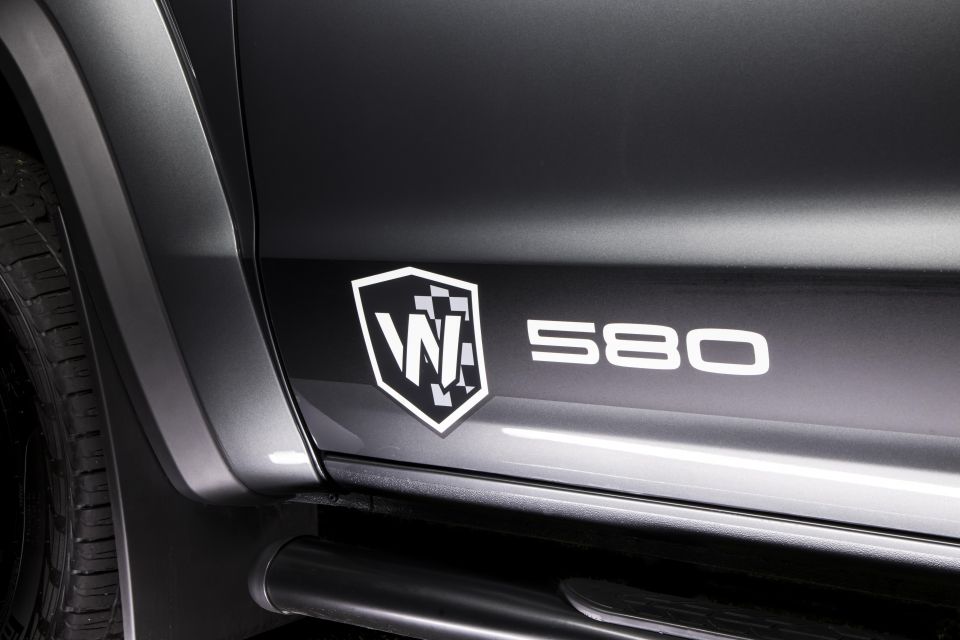
Click the images for the full gallery
Where expert car reviews meet expert car buying – CarExpert gives you trusted advice, personalised service and real savings on your next new car.
Scott Collie is an automotive journalist based in Melbourne, Australia. Scott studied journalism at RMIT University and, after a lifelong obsession with everything automotive, started covering the car industry shortly afterwards. He has a passion for travel, and is an avid Melbourne Demons supporter.


Ben Zachariah
22 Hours Ago


Matt Campbell
1 Day Ago


Derek Fung
5 Days Ago


Damion Smy
8 Days Ago


Ben Zachariah
10 Days Ago


James Wong
16 Days Ago